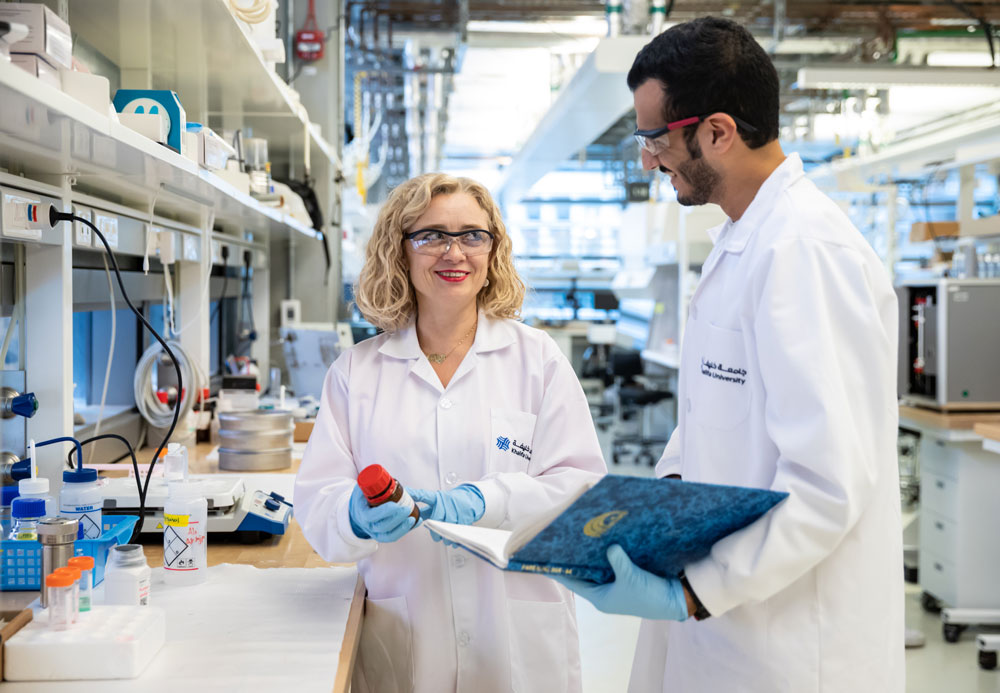Green hydrogen: An environment-friendly fuel source refined by computational chemistry
Powerful computational techniques can identify the best photocatalysts for green hydrogen production from an almost unlimited number of possibilities.
Hydrogen is emerging as a promising energy vector to carbon-based materials that produce greenhouse gases when burned. However, current hydrogen production methods mainly use steam methane reforming, with hydrogen produced as a component from natural gas and steam reacting. This technique, however, is both energy and carbon-intensive, usually releasing a considerable amount of carbon dioxide into the atmosphere. Fortunately, there’s a cleaner path to hydrogen production using solar energy. In addition to using solar power for electrolysis to split water into hydrogen and oxygen, solar energy can also be used to split hydrogen sulfide, or H2S, into hydrogen and sulfur. This approaches that could provide a sustainable and abundant supply of this potentially vital fuel source.1
A team led by Lourdes Vega from Khalifa University’s Research and Innovation Center on CO2 and Hydrogen (RICH) is at the forefront of the global quest for efficient photocatalysts that can accelerate the splitting of H2S. Their innovative approach involves computational methods to filter through thousands of materials. “Our study highlights promising novel photocatalyst materials that could lead to more efficient and environmentally friendly methods for producing hydrogen through a well-designed systematic screening procedure based on computational calculations,” Vega says.
Fabricating optimized materials
Although humans have been creating materials and optimizing their properties for thousands of years, experimental processes have been slow and inefficient, with much trial-and-error before success. Modern material fabrication techniques, however, have expanded the possibilities exponentially. In the case of hydrogen evolution reaction (HER) catalysts for hydrogen production, many semiconductor materials have already been investigated, but there is more to learn. Their performance and catalytic activity depend on numerous factors, but most importantly, they can be drastically changed by adding certain atoms, known as dopants, to modify the material’s electrical conductivity. Both the choice of dopant atoms and the fraction of atoms that are replaced are variables, bringing a wide range of materials and design options.
This gives rise to a challenge: identifying the material with the best properties for a specific application without resorting to time-consuming and costly trial-and-error experiments. The answer lies in leveraging advanced computational techniques to model hypothetical materials and predict their properties, tuning their composition and structure to optimize their catalytic properties.
Using this approach, Vega and her co-workers have most recently focused on the semiconductor cadmium sulfide (CdS), which is used in hydrogen production. Doping CdS with a transition metal has been shown to significantly increase light absorption and, as a consequence consequently, photocatalytic hydrogen production. The team used a computational method known as density functional theory (DFT) to study 18 single dopants and a variety of cadmium-sulfide based catalysts with two dopants.
The results show that most transition metals-doped cadmium-sulfide photocatalysts improve HER performance compared with the pristine material, by providing additional pathways for electric charge carriers to flow. The DFT calculations ranked the performance of the different dopants, with platinum, rhodium, and palladium coming out on top. Moreover, the analysis indicates that dual-dopant materials, such as cobalt-platinum, palladium-platinum and cobalt-rhodium, show synergistic effects that could potentially increase HER performance due to synergistic effects.
The study predicts that a new type of catalyst, cobalt-cadmium sulfide, not previously experimentally explored, promises excellent performance in both water and hydrogen sulfide photocatalytic splitting. “We are now in the process of synthesizing and testing the prioritized materials, with the best performers to be tested at lab-scale pilot plants,” says Vega. “On the modeling side, we are employing artificial intelligence to assist in large-scale screening of many of the hundreds of other metal sulfide catalysts in the search for optimum photocatalytic or electrocatalytic hydrogen generation.”
Collaborating with industry for a sustainable tomorrow
RICH’s success can be attributed in part to the diverse team of experts in materials science and other areas, including physics, chemistry, chemical engineering, mechanical engineering, materials science and geophysics. “RICH has a team of enthusiastic professional researchers, scientists, engineers, and graduate students who possess extensive and complementary expertise in materials science, from multiscale modeling to the design, synthesis, characterization and testing of ad-hoc materials for the desired application,” says Vega. “This expertise, together with the advanced laboratory facilities and computational resources, enables us to tackle complex challenges and pushes the boundaries of materials research.”
Another strength is the close relationship with industry, explains Vega. “Contact with industry allows us to understand where the challenges in the energy transition are with respect to hydrogen and decarbonization, and the role materials science can play in tackling them.”
Reference
- Li, Y., Bahamon, D., Sinnokrot, M. et al. Computational screening of transition metal-doped CdS for photocatalytic hydrogen production. npj Computational Materials 8, 229 (2022). | Article




